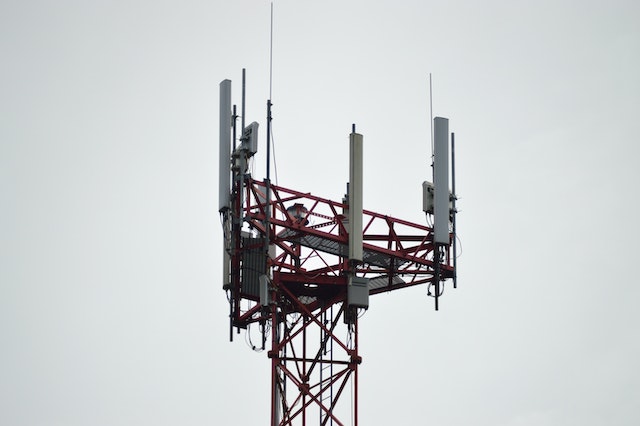
What is the range of a cell phone tower? The average maximum range of a phone mast is about 40 km, 25 miles.
How does a cell phone tower work? Cell towers have detectors and transmitters to receive and transmit radio signals. When you want to look at a website on your phone, my site ilearnedthistoday.com, for example, your phone first sends out a radio signal to find the closest cell phone tower. This is called “pinging” and it is a very lower-power radio signal. The only information in the signal is the location of the phone, and the information that is in the SIM card: your carrier, your phone number, etc. When your phone finds a tower, it establishes a connection and sends out its request through radio waves. Radio waves travel at the speed of light, so the connection and the request is almost instantaneous. Once the cell tower picks up the radio wave, it transforms it into light and transmits the requests down underground fiber optic cables to a data center. This data center receives the request and looks up the site in the same way as any internet service. The data center sends the information back to the cell tower that sent the request, which then transmits it to your phone using radio waves. Your phone has a receiver and a transmitter that are combined into one transceiver. Different frequencies are used for the data your phone transmits and data your phone receives so they don’t get meddled up. Your phone translates the data into the website you see. All of this can take less than a second.
Every cell tower has a maximum range. Your phone constantly measures the strength of the signal it is receiving from a cell phone tower, but it keeps pinging other towers at the same time. If it finds a stronger signal, it will abandon the tower it is using a switch to the new tower. By doing this, as you are moving, and as long as there are towers, your phone will always be connected to one.
This process is also how you can receive a phone call while you are moving around. You could be anywhere in the country your phone is contracted in, so how does your phone company know which tower to route the phone call through so that it reaches you? Because your phone is constantly pinging towers with the information that is on your SIM card, your phone company always knows which tower you are close to and which tower you are connected to. This is why people who are on the run from the police or FBI switch their phone off.
So, what is the range of a cell phone tower? The average maximum range is about 40 km, but that can be far more or far less depending on where the tower is. Your phone and the tower are communicating with radio waves and a radio wave can travel for an infinite distance, in a vacuum. If you put the cell phone tower in space and sent a radio wave, it would take a long time, but you could communicate with anywhere. That was how we communicated with the Voyager Probes before they ran out of power and it is why our television signals could be intercepted by intelligent life in different galaxies. We do not live in a vacuum, which cuts down on the distance a radio wave can travel.
There are four things that dictate the maximum range of a cell tower. The first and probably most important is where the tower is located. Radio waves can pass through walls, but they may lose some of their energy. The more walls that there are to pass through, the more power the radio wave will lose. Most cell phone towers are built in cities because that is where most people live and the more buildings there are between you and the tower, the less powerful the signal will be. An average cell phone tower in a big open space can have a range of up to 72 km. In a city, there are many cell phone towers because the cell phone companies try to give you an overlap so you are always within reach of a tower. They also put them high up on buildings to increase their range.
The second thing that affects the range of the cell phone tower is the power supply. Because radio waves are energy, the more energy you can have the more obstacles the wave can pass through. The third thing is the number of people using the tower and the amount of data they are using. As we have moved from 3G to 4G and to 5G, the radius of each cell tower has shrunk. This is because with each person using the signal from the tower, the signal loses power. More people using more data close to the tower means it won’t have enough power to reach people further out. The average range of a tower servicing a 5G network is about 3 km. In most large cities, the network companies try to put cell phone towers every half kilometer to ensure coverage. And the fourth thing that affects the range is the frequency of the radio wave. Different companies use different frequencies. Long wave frequencies tend to travel further than short wave frequencies.
So, the effective range of a cell tower is about 45 km, but if you put it in a city with lots of people using 5G, it probably will only reach a kilometer, if that. And this is what I learned today.
Sources
https://smallbusiness.chron.com/advantages-cdma-wireless-technology-55277.html
https://portal.ct.gov/lib/csc/miscellaneous/cell_phone_tower_final_may_2015.pdf
https://www.simbase.com/learning/how-mobile-networks-work
https://www.wilsonpro.com/blog/how-building-materials-affect-cell-phone-signal-booster-performance
